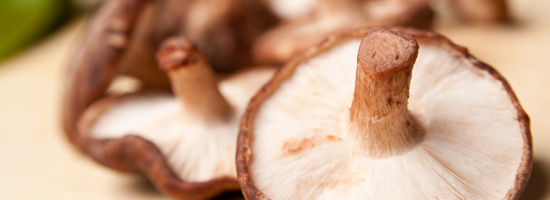Top Ten Foods to Treat Chronic Hepatitis

“Let your food be your medicine and your medicine, your food.” — Hippocrates
Here are some food items that are strong enough to have a therapeutic effect. This originally ran as a newsletter for Thanksgiving a few years back, but was so popular we decided to bring it back
#1 Mung beans contain a natural protease inhibitor and have a long use in detoxifying poisons in TCM (Traditional Chinese Medicine) Mung or the Latin Vigna Radiata is one of the herbs used in the Hepatitis Recovery Formula
Here is a kichari mung bean recipe from Michael Tierra L. Ac.
My favorite recipe is soaking split mung dahl for an hour and then wash the dahl well. Then simmer till the dahl dissolves well. Bake a winter squash of your choice and scoop out the flesh minus the seeds and skin. Then blend with ginger, miso, tumeric, and coconut milk. I will often add in a small lemon as well. Delicious and very liver friendly.
#2 Milk Thistle Seeds: These can be bought by the pound, or better yet harvested yourself, bring gloves. Grind them in your coffee grinder and stir fry (stir fry is without oil or butter, where you stir quite often to keep from burning) and add sea salt. The Japanese make gomasio, goma is sesame seeds and sio is sea salt and use it as a condiment. Milk Thistle Seeds make a delicious, nutty condiment and that is much tastier than gomasio.
#3 Shitake Mushrooms contain lentinan which is a beta-glucan with powerful effects on hepatitis and many other diseases, including cancer. The current Hep C Powder has a base of Shitake Extract that is 25% lentinan. According to the Sloan Kettering Cancer Center lentinan is used for cancer, high cholesterol, strengthening the immune system, and treating infections. It also raises white blood cell counts and increases helper t-cells. Shitake contains many other ingredients with active properties as well.
#4 Whey protein both contains lactoferrin as well as builds glutathione levels. Glutathione is the main anti-oxidant found inside liver cells and whey protein as well as raw dairy are your best dietary sources. Lactoferrin upregulates the immune system, regulates iron, and is a direct anti-viral that interferes with the ability of HCV to dock onto hepatocytes.
#5 Coconut is chockful of medium chained fatty acids, including both Lauric and Caprylic that are strongly anti-infective. Its finest use is when there is poor thyroid function, fatigue, and low body temperature. It cranks up metabolism and fights infections that hamper the thyroid. Many years ago before the advent of protease inhibitors to treat HIV, one young man dying of AIDS decided to spend his remaining few months living on a South Pacific island. Once there he proceeded to eat at least one fresh young coconut every day. To everyone’s astonishment he went on to recover his health. This story which was printed in a newsletter that our clinic always received stuck in my mind about coconut’s potential in treating infections.
#6 Artichokes contain cynarin which promotes the flow of bile. Having stronger bile flow strengthens the digestion as bile emulsifies the fat that you eat. Also bile is made out of cholesterol and increasing bile flow lowers the amount of stored cholesterol. Artichoke as a member of the thistle family also helps control blood sugar levels.
#7 Selenium rich foods include Brazil Nuts, each nut containing approximately 75 mcg of selenium. Broccoli, onions, leeks, and garlic all accumulate selenium, mostly the methylselenocysteine type which in the studies of different types of selenium to inhibit cancer, it is the most effective as well as the safest. The basic idea is that selenium is to Hep C, what vitamin c is to colds. If you have an HCV infection your body needs more selenium than the average person. This is because HCV encodes selenoproteins depleting the cells of selenium. Researchers believe that when selenium is gone from cells, the virus will spread from cell to cell looking for it. Some call adequate selenium ‘viral birth control’ preventing viruses from spreading. Dr. Passwater, who has studied selenium for 20 years recommended 200 mcg daily for every 40 pounds of bodyweight for Hepatitis C patients.
#8 Lecithin contains phosphatidyl choline which is a phospholipid that is a building block for cell membranes. Because the liver has so many diverse functions, its cells contain more organelles all of which need cellular membranes. Lecithin also contains phosphatidyl serine which promotes the productions of nerve growth hormone which helps heal neurons. It also balances out the effect of cortisol on the brain, preserving memory and organizing the brain in the face of stress. PS & PC helps renew and flush out cell membranes keeping cells healthier and less prone to viral invasion. You can buy lecithin granules at health food stores and sprinkle a tablespoon on salads and other foods.
#9 Chlorella helps the body produce interferon which upregulates immunity. It is high in Vitamin K which strengthens platelets as well as many other nutrients. It detoxifies heavy metals including mercury, which have a pro-inflammatory action on liver enzymes. The only negative caveat on chlorella for Hepatitis C patients is that it is rich many nutrients including iron, so it is not recommended for those with high iron or ferritin.
#10 I know that many of you may be disappointed that red wine is not on this list for its resveratrol levels, but the final choice goes to juicing. My favorite recipe for liver health fennel, apples, lemon (including peel if organic)and watercress if organic or cilantro.
Liver Health Juice
1 lemon
5 apples
1 fennel bulb
1 bunch of cilantro, watercress, or parsley
Add in 1/3 of the total juice amount with water, otherwise it is
too strong for some. This is a delicious drink. Very energizing!
